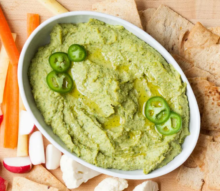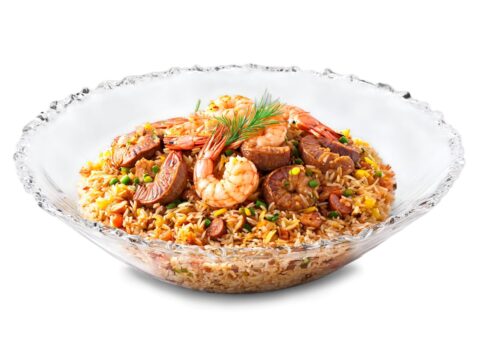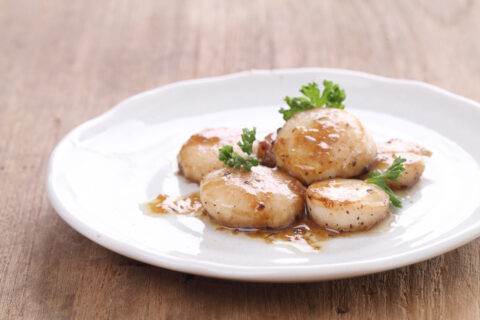
Sweet And Savoury Using Olive Oil Instead Of Butter
As we at Morocco Gold Extra Virgin Olive Oil bid farewell to the summer months and look towards Autumn, it’s a great time to explore new baking recipes. But did you know that extra virgin olive oil is a healthy fat substitute for butter in many baked dishes?
Here we have pulled together a selection of some of our olive oil based baked treats for the Fall 2024. Let’s start with this absolute winning combination of seasonal plums and extra virgin olive oil from Country Life. (Photo credit : CountryLife)
Plum, almond and olive-oil cake
Ingredients
- 20g butter
- 125ml Morocco Gold extra virgin olive oil
- 2 eggs
- 120g caster sugar (plus a little extra)
- Quarter of a teaspoon of almond essence
- Zest and juice of half a lemon
- 150g self-raising flour
- 150g ground almonds
- 100ml-150ml whole milk
- 3 plums
- 50g flaked almonds
- Icing sugar
Instructions
- Preheat your oven to 180C/350F/gas mark 4. Butter a 25cm (about 9in) loose-bottom tin and line with greaseproof paper.
- In a large bowl, whisk together the olive oil, eggs, caster sugar and almond essence until pale and fluffy. Add the lemon zest and juice and whisk again.
- In a separate bowl, mix together the self-raising flour, ground almonds and a pinch of salt.
- Add the dry ingredients to the wet and combine. Add the milk a little at a time, mixing well after each addition, until you have a loose cake batter. Pour the mixture into the prepared tin.
- Quarter the plums, remove the stones and cut each quarter into four even slices, fanning them out. Arrange them decoratively on the cake mixture.
- Dot the plums with butter and sprinkle over the flaked almonds and some caster sugar. Bake for about 30-35 minutes or until lightly browned - a skewer should come out clean.
- Remove the cake from the tin and cool on a wire rack. Dust with icing sugar before serving warm with vanilla ice cream.
Mary Berry’s Butternut Squash Soup
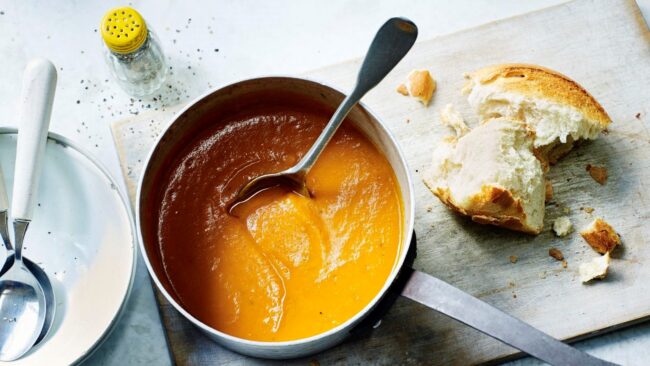
Nothing says Autumn like butternut squash soup, and this delightful offering from Mary Berry on BBC Food takes some beating.
Ingredients
- 1.5kg/3lb 5oz peeled and deseeded butternut squash, cut into 3cm/1¼in cubes.
- 1 large onion, roughly chopped
- 2 medium carrots, peeled and chopped
- 1 red pepper, deseeded and cut into cubes
- 4 tbsp Morocco Gold extra virgin olive oil
- 1 tbsp clear honey (optional)
- 5cm/2in piece fresh root ginger, peeled and chopped
- 1.5 litres/2½ pints vegetable stock
- Salt and freshly ground black pepper
Instructions
- Preheat the oven to 200C/180C Fan/Gas 6.
- Tip the prepared squash into a large, resealable freezer bag with the onion, carrots and red pepper. Add half the oil and salt and pepper and toss everything together until the vegetables are evenly coated.
- Tip into a large roasting tin and spread out to form a single layer.
- Roast in the oven for 40-45 minutes, or until tender and tinged brown. Drizzle over the honey, if using, 5 minutes before the end of cooking.
- Place the large, deep-sided saucepan over a medium heat, add the remaining oil and, when it is hot, add the ginger and fry for a minute.
- Pour in the stock and bring to the boil, then stir in the roasted vegetables and add salt and pepper.
- Remove the saucepan from the heat and, using a hand blender, blend the mixture until smooth. Return to the heat to warm through and serve hot with crusty bread
Apple & Olive Oil Cake With Maple Icing
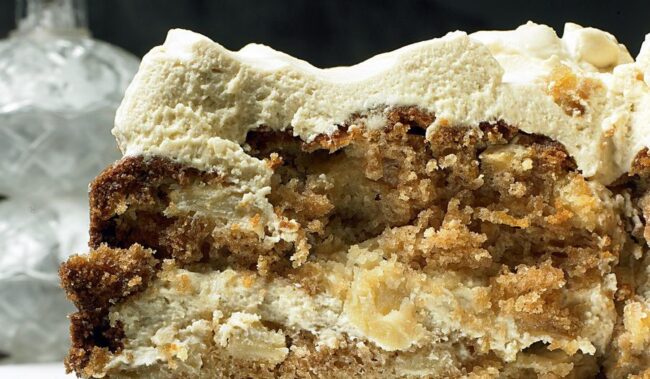
And finally, this Apple & Olive Oil Cake With Maple Icing from The Happy Foodie is a sumptuous way to celebrate the new season.
Ingredients
- 80g sultanas
- 60 ml water
- 280g plain flour
- ½ tsp ground cinnamon
- ¼ tsp salt
- ½ tsp baking powder
- 1 ¼ tsp bicarbonate of soda
- 120 ml Morocco Gold extra virgin olive oil
- 160g caster sugar
- ½ vanilla pod
- Eggs, lightly beaten
- 3 Bramley apples, peeled, cored and cut into 1cm dice
- Finely grated zest of 1 lemon
- 2 egg whites
- Icing sugar, for dusting (optional)
- For the maple icing:
- 100g unsalted butter, at room temperature
- 100g light muscovado sugar
- 85 ml maple syrup
- 220g cream cheese, at room temperature
Instructions
- Grease a 20cm springform cake tin and line the base and sides with baking parchment. Place the sultanas and water in a medium saucepan and simmer over a low heat until all of the water has been absorbed. Leave to cool.
- Preheat the oven to 190°C/170°C fan/Gas Mark 5. Sift the flour, cinnamon, salt, baking powder and bicarbonate of soda. Set aside.
- Put the oil and sugar in the bowl of a freestanding electric mixer fitted with a paddle attachment (or use a whisk if you don't have a mixer). Slit the vanilla pod lengthways in half and, using a sharp knife, scrape the seeds out into the bowl. Beat the oil, sugar and vanilla together, then gradually add the eggs. The mix should be smooth and thick at this stage. Mix in the diced apples, sultanas and lemon zest, then lightly fold in the sifted dry ingredients.
- Whisk the egg whites in a clean bowl, either by hand or with a mixer, until they have a soft meringue consistency. Fold them into the batter in 2 additions, trying to lose as little air as possible.
- Pour the batter into the lined tin, level it with a palette knife and place in the oven. Bake for 1½ hours, or until a skewer inserted in the centre comes out clean. Remove from the oven and leave to cool in the tin.
- Once the cake is completely cold, you can assemble it. Remove from the tin and use a large, serrated knife to cut it horizontally in half. You should end up with 2 similar discs. If the cake is very domed, you might need to shave a bit off the top half to level it.
- To make the icing, beat together the butter, muscovado sugar and maple syrup until light and airy. You can do this by hand, or, preferably, in a mixer, using the paddle attachment. Add the cream cheese and beat until the icing is totally smooth.
- Using a palette knife, spread a 1cm-thick layer of icing over the bottom half of the cake. Carefully place the top half on it. Spoon the rest of the icing on top and use the palette knife to create a pattern.
- Dust it with icing sugar, if you like.
Important Disclaimer
The information provided on this website is for general informational purposes only. All content, including text, graphics, images, and information, is presented as an educational resource and is not intended as a substitute for professional medical advice, diagnosis, or treatment.
Please consult with a qualified healthcare provider before making any decisions or taking any action based on the information you find on this Website. Do not disregard, avoid, or delay obtaining medical or health-related advice from your healthcare provider because of something you have read on this Website.
If you think you may have a medical emergency, call your doctor, go to the nearest emergency department, or call emergency services immediately. We are not responsible for any adverse effects resulting from your use of or reliance on any information or content on this Website.
By using this Website, you acknowledge and agree to this disclaimer in full.

